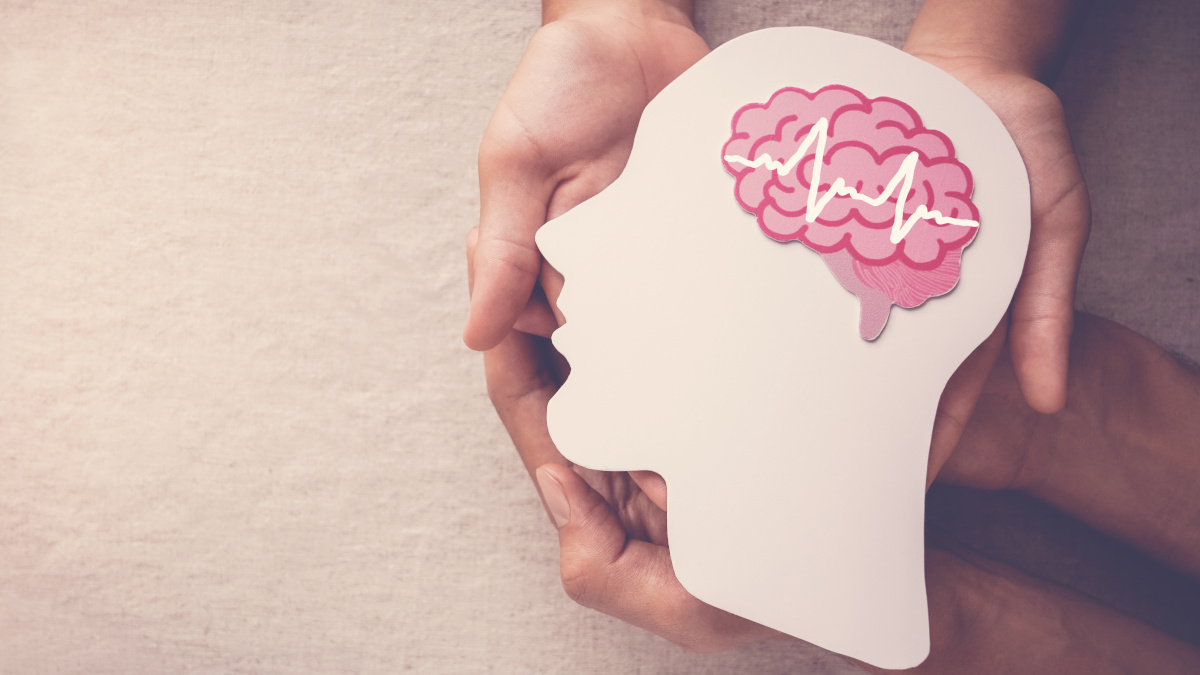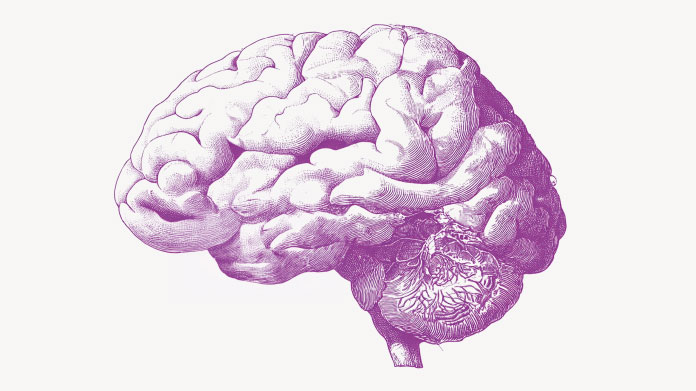The brain: the 3 best neuroprotective supplements
Incredibly complex, the brain remotely controls all the body’s functions. Discover the 2 key substances that provide it with optimal protection.

The nutritional needs of the brain
The primary organ of the central nervous system, the brain is like a powerful, on-board computer. Organised into different areas, interconnected by a network of some 100 billion neurons, it controls almost all the body’s functions (1). Without it, we would not be able to sense anything, move, think, memorise, speak or even breathe!
To perform its many tasks, the brain requires an increased and constant supply of energy. Its primary source of fuel is glucose, a simple sugar produced as a result of carbohydrate metabolism: indeed 20% of our total carbohydrate consumption is reserved for the brain (2)! Extremely oxygen-hungry, it – along with the myocardium - is the organ least able to withstand anoxia (lack of oxygen) (3).
Many nutrients act simultaneously to help preserve the integrity of our grey matter. Fats for example, (particularly polyunsaturated fatty acids) provide structure to neuronal membranes (4). Proteins are broken down into amino acids which are directly involved in synthesising neurotransmitters – the famous chemical mediators that regulate transmission of nerve signals between neurons (5).
Vitamins and minerals also work in tandem to provide neuroprotection at various levels, particularly in terms of cell signalling, transporting oxygen and fighting oxidative stress (6-7).
Neuroprotection and ageing
As we get older, chemical or structural changes occur in the brain to varying degrees depending on the individual. Certain areas of the brain shrink (by 5% per decade from the age of 40 onwards), the number of nerve cells decline, toxic substances accumulate and there’s a change in neurotransmitters (8).These changes are precipitated by a decrease in blood flow (20% on average) which prevents cerebral tissues from being properly oxygenated (9).
These various changes can have a direct impact on brain function, primarily affecting memory, coordination, mental performance or executive functions (reasoning, planning, organisation, judgement …) (10). More specifically, these cognitive problems slow down our ability to carry out daily tasks, make us repeatedly forget things, and impair our capacity for formulating words or generating ideas.
The good news is that it’s possible to prevent and stem this cognitive decline by adopting good lifestyle habits. In addition to eating healthily, regular exercise, challenging the brain every day (with sudoku, crosswords…) and having an active social life are all key to supporting good neuronal health (11-13).
At the same time, those active in the field of cerebral nutrition have been exploring a number of avenues to improve how the brain deals with the ravages of time.
Plant synergies for supporting cerebral function
With phytotherapy, we have at our disposal a number of plants that can really help to look after our grey matter. They include:
- Gingko biloba: nicknamed the ‘forty-coin tree’, this exceptionally long-lived tree supports normal cognitive function and healthy microcirculation (18);
- Bacopa monnieri: better known as water hyssop or brahmi in Ayurvedic medicine, this supports the central nervous system, and promotescerebral and nerve stimulation as well as having a positive effect on the hippocampus (19);
- Centella asiatica: used for over two thousand years in Asia, this plant – also known as tiger grass - plays a role in maintaining good mental health and cognitive function thanks to its regenerative properties (20);
- Huperzia serrata : much-prized in traditional Chinese medicine for its huperzine, an alkaloid able to cross the blood-brain barrier, this plant also supports mental health (21).
It may thus be wise to use these plants synergistically in order to gain maximum benefit from their neuroprotective effects (the cutting-edge supplement Neurex contains all these plant extracts, as well as other renowned substances such as turmeric, and vitamins B9 and B12, for a comprehensive action) (22).
Hericium erinaceus, a mushroom worth noting
Used in Chinese medicine since 200 BC, hedgehog or Lion’s Mane mushroom(Hericium erinaceus) has long white spines, giving it an unusual hairy appearance, hence its ‘Lion’s Mane’ nickname.
Biochemically, it contains beta-glucans, a specific type of polysaccharide involved in lipid metabolism, as well as hericenones, phenol compounds currently being studied by scientists for their interaction with nerve growth factor (NGF) (23).
Though its mechanism of action requires further investigation, supplementation with Hericium erinaceus (for example, the product Lion’s Mane, with 30% beta-glucans) looks set to be a valuable defence aid.
And for stimulating the brain?
Are you interested more in optimising your cerebral function? While neuroprotection is all about preserving the health of existing nerve cells, there are also specific substances that can increase and strengthen cognitive performance: these are known as nootropics (24). They’re designed to restore your mental clarity and agility, challenge you mentally, increase your efficiency at work …
Along with bacopa and ginkgo, these are compounds which are often to be found in our cupboards: caffeine (the stimulant in coffee) and L-theanine ( (the key amino acid in green tea) both fall into this category (25).
In some specific nootropic supplements they are thus an integral part of the formulation (such as Smart Pills, an ultra-powerful formulation combining bacopa, ginkgo, caffeine, L-theanine and taurine) (26).
References
- Herculano-Houzel S. The human brain in numbers: a linearly scaled-up primate brain. Front Hum Neurosci. 2009 Nov 9;3:31. doi: 10.3389/neuro.09.031.2009. PMID: 19915731; PMCID: PMC2776484.
- Mergenthaler P, Lindauer U, Dienel GA, Meisel A. Sugar for the brain: the role of glucose in physiological and pathological brain function. Trends Neurosci. 2013 Oct;36(10):587-97. doi: 10.1016/j.tins.2013.07.001. Epub 2013 Aug 20. PMID: 23968694; PMCID: PMC3900881.
- Rink C, Khanna S. Significance of brain tissue oxygenation and the arachidonic acid cascade in stroke. Antioxid Redox Signal. 2011 May 15;14(10):1889-903. doi: 10.1089/ars.2010.3474. Epub 2010 Dec 4. PMID: 20673202; PMCID: PMC3078506.
- Tracey TJ, Steyn FJ, Wolvetang EJ, Ngo ST. Neuronal Lipid Metabolism: Multiple Pathways Driving Functional Outcomes in Health and Disease. Front Mol Neurosci. 2018 Jan 23;11:10. doi: 10.3389/fnmol.2018.00010. PMID: 29410613; PMCID: PMC5787076.
- Institute of Medicine (US) Committee on Military Nutrition Research. The Role of Protein and Amino Acids in Sustaining and Enhancing Performance. Washington (DC): National Academies Press (US); 1999. 14, Amino Acid and Protein Requirements: Cognitive Performance, Stress, and Brain Function. Available from: https://www.ncbi.nlm.nih.gov/books/NBK224629/
- Kennedy DO. B Vitamins and the Brain: Mechanisms, Dose and Efficacy--A Review. 2016 Jan 27;8(2):68. doi: 10.3390/nu8020068. PMID: 26828517; PMCID: PMC4772032.
- Kirkland AE, Sarlo GL, Holton KF. The Role of Magnesium in Neurological Disorders. 2018 Jun 6;10(6):730. doi: 10.3390/nu10060730. PMID: 29882776; PMCID: PMC6024559.
- Peters R. Ageing and the brain. Postgrad Med J. 2006 Feb;82(964):84-8. doi: 10.1136/pgmj.2005.036665. PMID: 16461469; PMCID: PMC2596698.
- Ghaznawi R, Zwartbol MH, Zuithoff NP, Bresser J, Hendrikse J, Geerlings MI; UCC-SMART Study Group. Reduced parenchymal cerebral blood flow is associated with greater progression of brain atrophy: The SMART-MR study. J Cereb Blood Flow Metab. 2021 Jun;41(6):1229-1239. doi: 10.1177/0271678X20948614. Epub 2020 Aug 17. PMID: 32807000; PMCID: PMC8138332.
- Mattson MP, Arumugam TV. Hallmarks of Brain Aging: Adaptive and Pathological Modification by Metabolic States. Cell Metab. 2018 Jun 5;27(6):1176-1199. doi: 10.1016/j.cmet.2018.05.011. PMID: 29874566; PMCID: PMC6039826.
- Gomes-Osman J, Cabral DF, Morris TP, McInerney K, Cahalin LP, Rundek T, Oliveira A, Pascual-Leone A. Exercise for cognitive brain health in aging: A systematic review for an evaluation of dose. Neurol Clin Pract. 2018 Jun;8(3):257-265. doi: 10.1212/CPJ.0000000000000460. PMID: 30105166; PMCID: PMC6075983.
- Pillai JA, Hall CB, Dickson DW, Buschke H, Lipton RB, Verghese J. Association of crossword puzzle participation with memory decline in persons who develop dementia. J Int Neuropsychol Soc. 2011 Nov;17(6):1006-13. doi: 10.1017/S1355617711001111. PMID: 22040899; PMCID: PMC3885259.
- Hikichi H, Kondo K, Takeda T, Kawachi I. Social interaction and cognitive decline: Results of a 7-year community intervention. Alzheimers Dement (N Y). 2016 Dec 21;3(1):23-32. doi: 10.1016/j.trci.2016.11.003. PMID: 29067317; PMCID: PMC5651375.
- Tian J, Dang H, Wallner M, Olsen R, Kaufman DL. Homotaurine, a safe blood-brain barrier permeable GABAA-R-specific agonist, ameliorates disease in mouse models of multiple sclerosis. Sci Rep. 2018 Nov 8;8(1):16555. doi: 10.1038/s41598-018-32733-3. PMID: 30410049; PMCID: PMC6224391.
- Spalletta G, Cravello L, Gianni W, Piras F, Iorio M, Cacciari C, Casini AR, Chiapponi C, Sancesario G, Fratangeli C, Orfei MD, Caltagirone C, Piras F. Homotaurine Effects on Hippocampal Volume Loss and Episodic Memory in Amnestic Mild Cognitive Impairment. J Alzheimers Dis. 2016;50(3):807-16. doi: 10.3233/JAD-150484. PMID: 26757035.
- Caltagirone C, Ferrannini L, Marchionni N, Nappi G, Scapagnini G, Trabucchi M. The potential protective effect of tramiprosate (homotaurine) against Alzheimer's disease: a review. Aging Clin Exp Res. 2012 Dec;24(6):580-7. doi: 10.3275/8585. Epub 2012 Sep 5. PMID: 22961121.
- Schuff N, Woerner N, Boreta L, Kornfield T, Shaw LM, Trojanowski JQ, Thompson PM, Jack CR Jr, Weiner MW; Alzheimer's Disease Neuroimaging Initiative. MRI of hippocampal volume loss in early Alzheimer's disease in relation to ApoE genotype and biomarkers. Brain. 2009 Apr;132(Pt 4):1067-77. doi: 10.1093/brain/awp007. Epub 2009 Feb 27. PMID: 19251758; PMCID: PMC2668943.
- Singh SK, Srivastav S, Castellani RJ, Plascencia-Villa G, Perry G. Neuroprotective and Antioxidant Effect of Ginkgo biloba Extract Against AD and Other Neurological Disorders. 2019 Jul;16(3):666-674. doi: 10.1007/s13311-019-00767-8. PMID: 31376068; PMCID: PMC6694352.
- Aguiar S, Borowski T. Neuropharmacological review of the nootropic herb Bacopa monnieri. Rejuvenation Res. 2013 Aug;16(4):313-26. doi: 10.1089/rej.2013.1431. PMID: 23772955; PMCID: PMC3746283.
- Gray NE, Zweig JA, Caruso M, Martin MD, Zhu JY, Quinn JF, Soumyanath A. Centella asiatica increases hippocampal synaptic density and improves memory and executive function in aged mice. Brain Behav. 2018 Jul;8(7):e01024. doi: 10.1002/brb3.1024. Epub 2018 Jun 19. PMID: 29920983; PMCID: PMC6043711.
- Callizot N, Campanari ML, Rouvière L, Jacquemot G, Henriques A, Garayev E, Poindron P. Huperzia serrata Extract 'NSP01' With Neuroprotective Effects-Potential Synergies of Huperzine A and Polyphenols. Front Pharmacol. 2021 Aug 30;12:681532. doi: 10.3389/fphar.2021.681532. PMID: 34526893; PMCID: PMC8435632.
- Bhat A, Mahalakshmi AM, Ray B, Tuladhar S, Hediyal TA, Manthiannem E, Padamati J, Chandra R, Chidambaram SB, Sakharkar MK. Benefits of curcumin in brain disorders. Biofactors. 2019 Sep;45(5):666-689. doi: 10.1002/biof.1533. Epub 2019 Jun 11. PMID: 31185140.
- Li IC, Lee LY, Tzeng TT, Chen WP, Chen YP, Shiao YJ, Chen CC. Neurohealth Properties of Hericium erinaceus Mycelia Enriched with Erinacines. Behav Neurol. 2018 May 21;2018:5802634. doi: 10.1155/2018/5802634. PMID: 29951133; PMCID: PMC5987239.
- Suliman NA, Mat Taib CN, Mohd Moklas MA, Adenan MI, Hidayat Baharuldin MT, Basir R. Establishing Natural Nootropics: Recent Molecular Enhancement Influenced by Natural Nootropic. Evid Based Complement Alternat Med. 2016;2016:4391375. doi: 10.1155/2016/4391375. Epub 2016 Aug 30. PMID: 27656235; PMCID: PMC5021479.
- Owen GN, Parnell H, De Bruin EA, Rycroft JA. The combined effects of L-theanine and caffeine on cognitive performance and mood. Nutr Neurosci. 2008 Aug;11(4):193-8. doi: 10.1179/147683008X301513. PMID: 18681988.
- Roe AL, Venkataraman A. The Safety and Efficacy of Botanicals with Nootropic Effects. Curr Neuropharmacol. 2021;19(9):1442-1467. doi: 10.2174/1570159X19666210726150432. PMID: 34315377; PMCID: PMC8762178.
Keywords
12 Days
A Product worth waiting for when not…
A Product worth waiting for when not available and then arriving as a surprise!
DOMINIC
14 Days
On time shipping
On time shipping
GEORGE Verne
15 Days
Ordering was easy and the product was…
Ordering was easy and the product was delivered with no problems. Appreciated that I was notified when it would arrive. Thanks!
MascarC
21 Days
Great customer service - responsive …
I ordered from them and my item was unavailable for sometime. I was super happy when they reactivated my order and shipped my item which arrived very quickly. Great customer service.
Ruth Rueter
22 Days
Super fast shipping
Super fast shipping
Donald Borling
25 Days
Reputable companysearch and the number of…
The research and the number of selection of products.
NAKHJAVAN Shervin
38 Days
The Anti Aromatase is a great product
The Anti Aromatase is a great product. You just need to have constant inventory. Recently this product has been out of stock.
GEORGE Verne
40 Days
Great help on chat
Great help on chat. Knowledgeable and friendly.
Jason Argos
43 Days
Customer service was fast and friendly.
Customer service helped to stop the transaction process of the subscription. I appreciated that.
Greenie
43 Days
I order here due to the high quality of…
I order here due to the high quality of the products and the quick delivery of items - thank you
Barbara J
45 Days
SuperSmart's Eye Pressure supplements: highly recommended!
I purchase SuperSmart's Eye Pressure supplements regularly for over 5 years, and gotta say they are truly a wonderful product for my Glaucoma. Highly recommended if you have eye pain from your Glaucoma.
D. Martinez
49 Days
Quick service
Quick service
MONELL
50 Days
Speedy service.
Speedy service.
ROSENTHAL Marvin
54 Days
Clear website- Efficient
Clear website. Excellent search engine and fast delivery!
Mohamad Hussein
56 Days
They have great products.
They have great products.
Vickie



